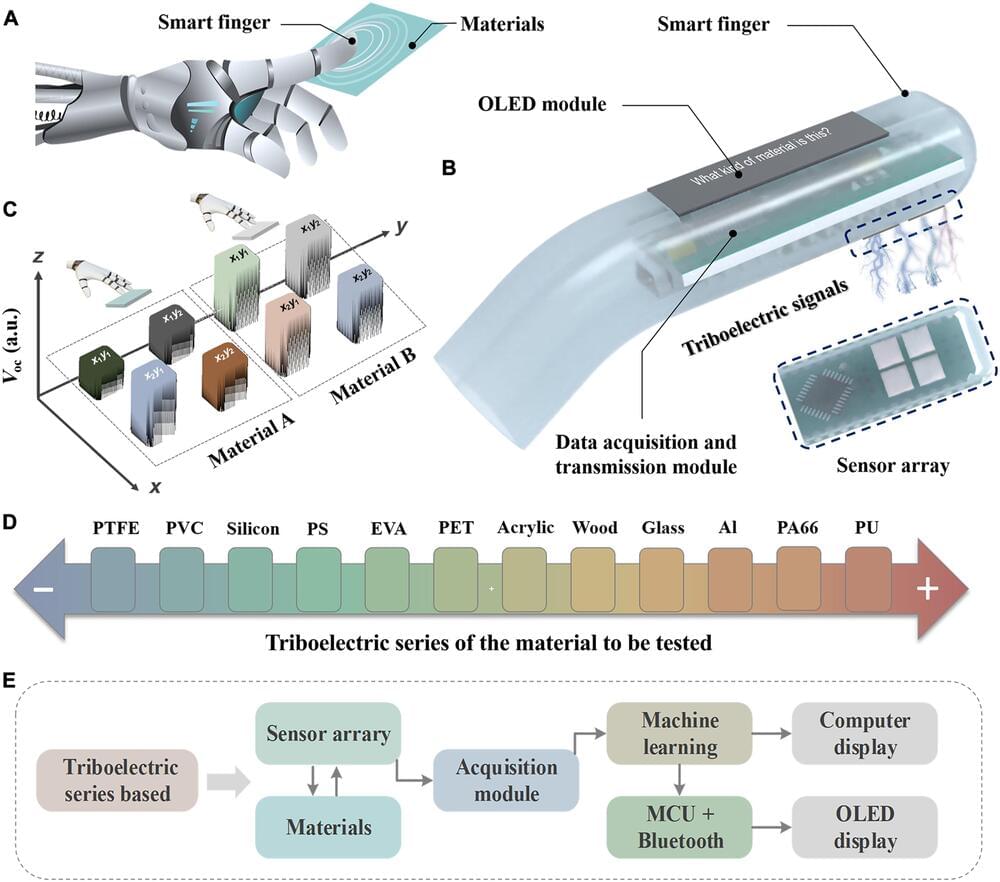A team of researchers at the Chinese Academy of Sciences, has developed an artificial finger that was able to identify certain surface materials with 90% accuracy. In their paper published in the journal Science Advances, the group describes how they used triboelectric sensors to give their test finger an ability to gain a sense of touch.
Prior research has led to the development of robotic fingers that have the ability to recognize certain attributes of certain surfaces, such as pressure or temperature—the team with this new effort, have taken such efforts further by adding the ability to identify a material that is being touched.
The finger was created by applying small square sensors to the tip of a finger-shaped object. Each of the squares was made of a different kind of plastic polymer, each chosen because of their unique electrical properties. When such sensors are moved close to an object, such as a flat surface, electrons from the sensors interact with the materials in unique ways.
